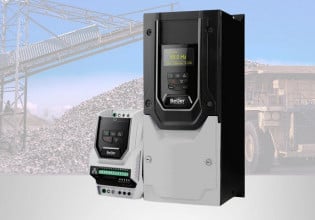Selecting a Robotic Arm Solution for Industrial Robots
Start learning about robotic arm solution, kinematic chain and motion planning, in this first technical installment.
Since the introduction of PLCs in industrial engineering in 1968, automating process capabilities have increased at a steady pace.
Improvements in silicon-based integrated circuits and the emergence of mechatronics as a discipline made machines automate tasks with high precision and accuracy. The robotics field became a reality and not just a pipe dream.
Human Hands: The First Tool
Humans have been capable of large-scale improvements in a relatively small timeframe because of what human hands evolved to be.
A hand—formed by many bones, joints, muscles, ligaments, and tendons—can execute a versatile array of tasks. This is possible due to the human hand’s dexterity and the superior control we have with our appendages. Opposable thumbs enhanced the prehensile nature of the hand humans received from evolutionary ancestors.
The versatility, dexterity, and control possible by our hands enabled us to create and use tools to bring advancements, instead of evolving our body.
Types of Robotic Arms
Robotic arms were the way forward after automating regular, repeatable tasks. Trying to mimic human hand versatility, robotic arms can have vastly different kinds of tools as appendages. Welding tips, drilling tips, polishing tools, liquid injection systems, etc., can be tooltips for a robotic arm.
Even though robotic arms cannot match their human counterparts in terms of versatility and dexterity, they can accomplish specialized tasks in a modern industrial setting.

Figure 1. A robotic arm. Image used courtesy of Big Stock
Many different types of robotic arms are available according to their capability and the complexity of movements they can perform.
- Cartesian/Gantry robot: Cartesian robots operate by executing linear motion in two or three axes in the cartesian coordinate system. They are also called linear robots.
- SCARA robot: In addition to the linear axis movements of linear robots, SCARA has two rotary joints for more versatile movement.
- Cylindrical robot: Cylindrical robots use axes of cylindrical coordinate systems for motion planning.
- Spherical/Polar robot: It uses polar coordinate systems, unlike Cartesian and cylindrical robots.
- Articulated robot: A robot with a complex set of linear and rotary movements incorporated together is an articulated robot. They have high versatility and programmability than other robots. Six-axis robots are widely used industrial robots that can be classified as articulated robots.
- Anthropomorphic robot: It resembles a human hand with fingers and thumb that can be controlled independently. Such robots can have high degrees of freedom (30 and more), whereas six-axis robots have six degrees of freedom.
Outlined below are two robotic arm solutions for cartesian robots, six-axis robots, and others.
Robotic Arm Solution
Application of mathematical principles is needed to design robotic parameters and calculate the movement required to complete a robot’s instruction. As we saw in the previous section, there are different kinds of robotic arms used in the industry. Each of them follows a different coordinate system due to the differences in mechanical design and use cases.

Figure 2. A Cartesian robot arm. Image courtesy of Bosch Rexroth
Cartesian robots only execute linear motion; the control equipment and motors can be mounted on straight line poles supported by rigid scaffoldings. Large, automated cranes in container terminals are examples of gantry robots. They only execute linear motion and can be defined, designed, and implemented with a three-dimensional Cartesian coordinate system. It has three axes for movement: x-axis, y-axis, and z-axis. Thus, it has three degrees of freedom.
Gantry robots can only perform tasks limited by their three degrees of freedom. For more flexible movements, robots need to have more degrees of freedom. As the degrees of freedom increase, the dexterity of the robot also improves. Such robots in industrial settings commonly use kinematic structures.
Kinematic Chain
Donald L. Pieper proposed a design method for robotic arms called 321 kinematic structure. The kinematic structure, also called the kinematic chain, is used in most industrial robots today, except cartesian/gantry robots.

Figure 3. The Stanford arm. Image used courtesy of Gildardo Sánchez [CC BY 2.0]
Among the first implementation of this methodology is the Stanford arm based on the thesis of Donald Pieper. It was the first six-axis robot with six degrees of freedom for movement. It had two revolute joints at the base, one spherical joint, and a prismatic joint.
Today, a significant number of industrial robots are built using this design methodology. The kinematic structure and kinematic chain are synonymous with 321 kinematic structure.
Motion Planning
Motion planning is the computational problem of calculating the path a robotic arm follows to execute its tasks. Robotic arms have different axes controlled by separate motors. Different configurations of the motors achieve different paths for motion. Keep an eye out for the second Robotic Arm Solution article for more information on motion planning.
Robotic arms are the evolution of machines accomplishing automated tasks to mimic the human hand for accomplishing complex and versatile tasks. Robotic arms can have different tooltips to achieve a variety of tasks. There are many different types of robotic arms according to the movement, coordinate system, and degrees of freedom. Robotic arm solution is the mathematical solution for maneuvering the arm.
The upcoming series will provide insight into how to use the kinematic chain and motion planning in robotic arms.






